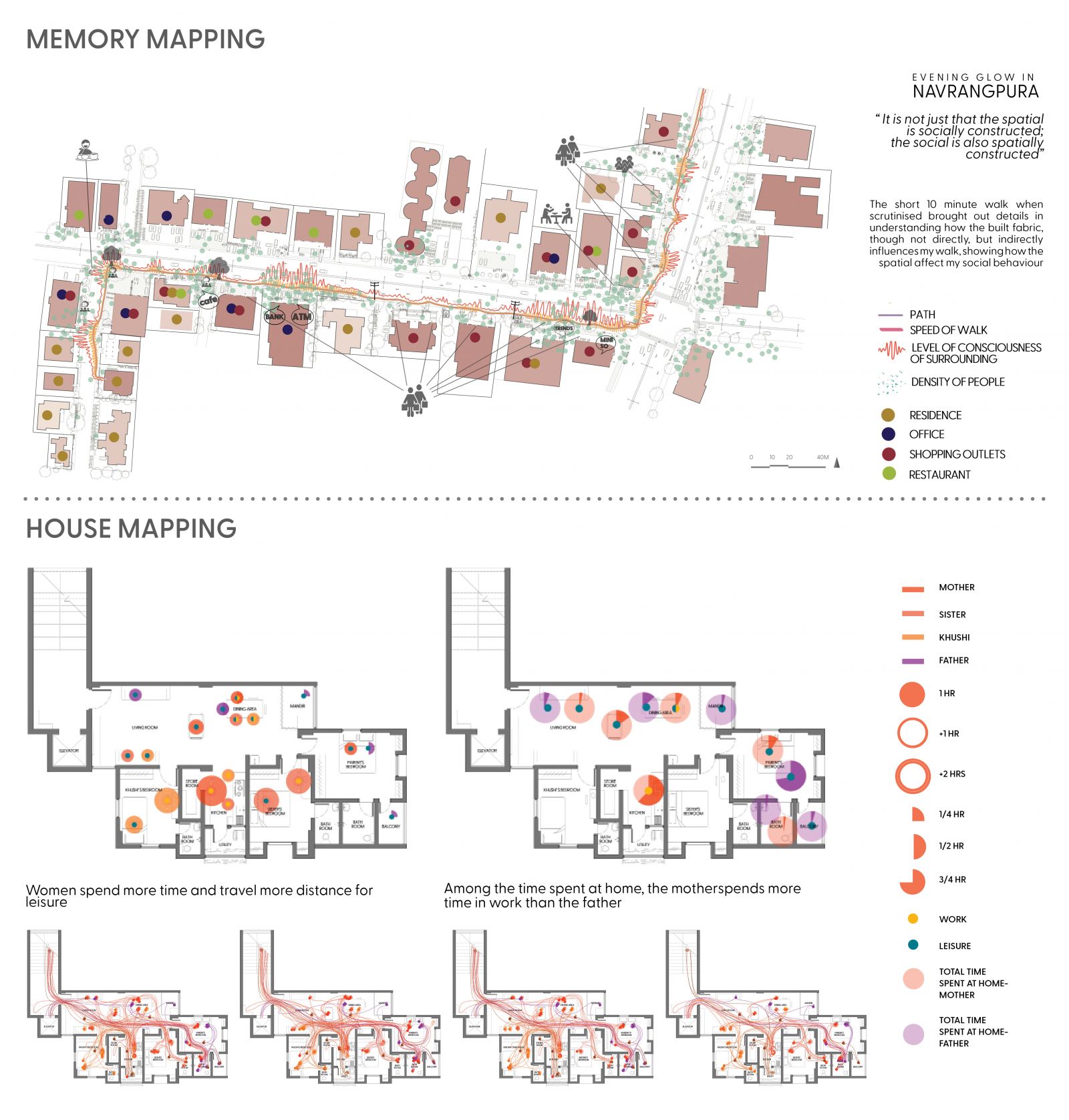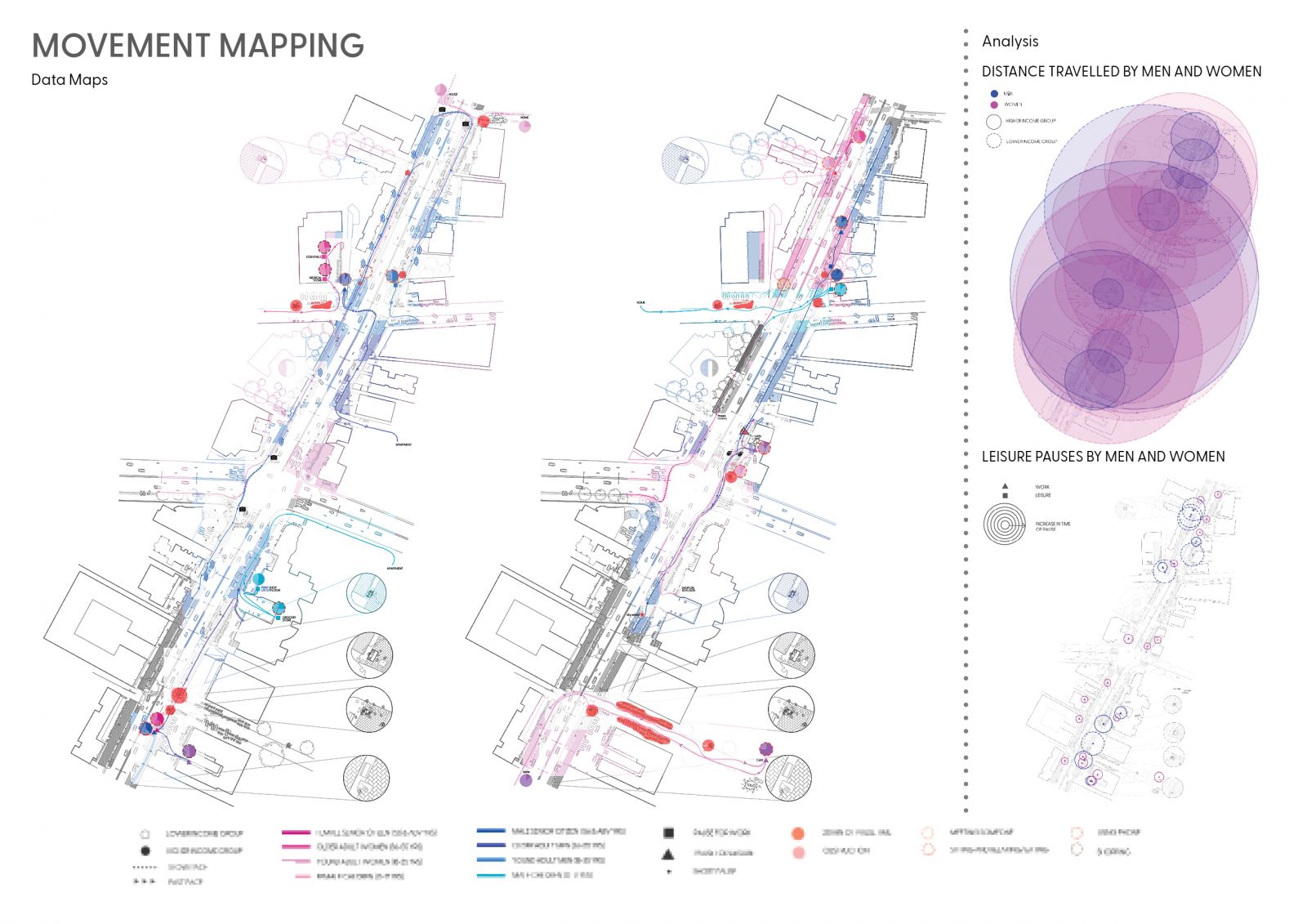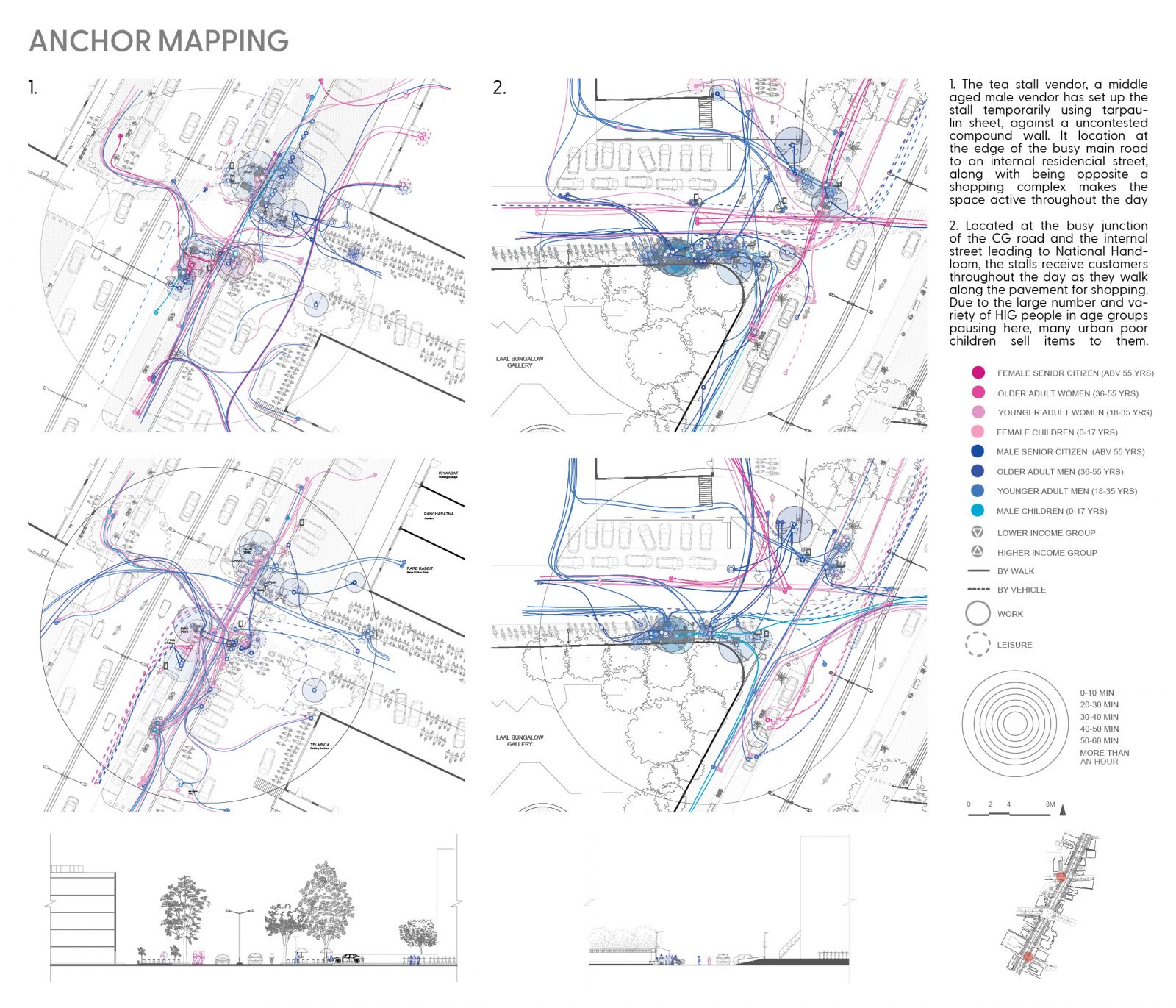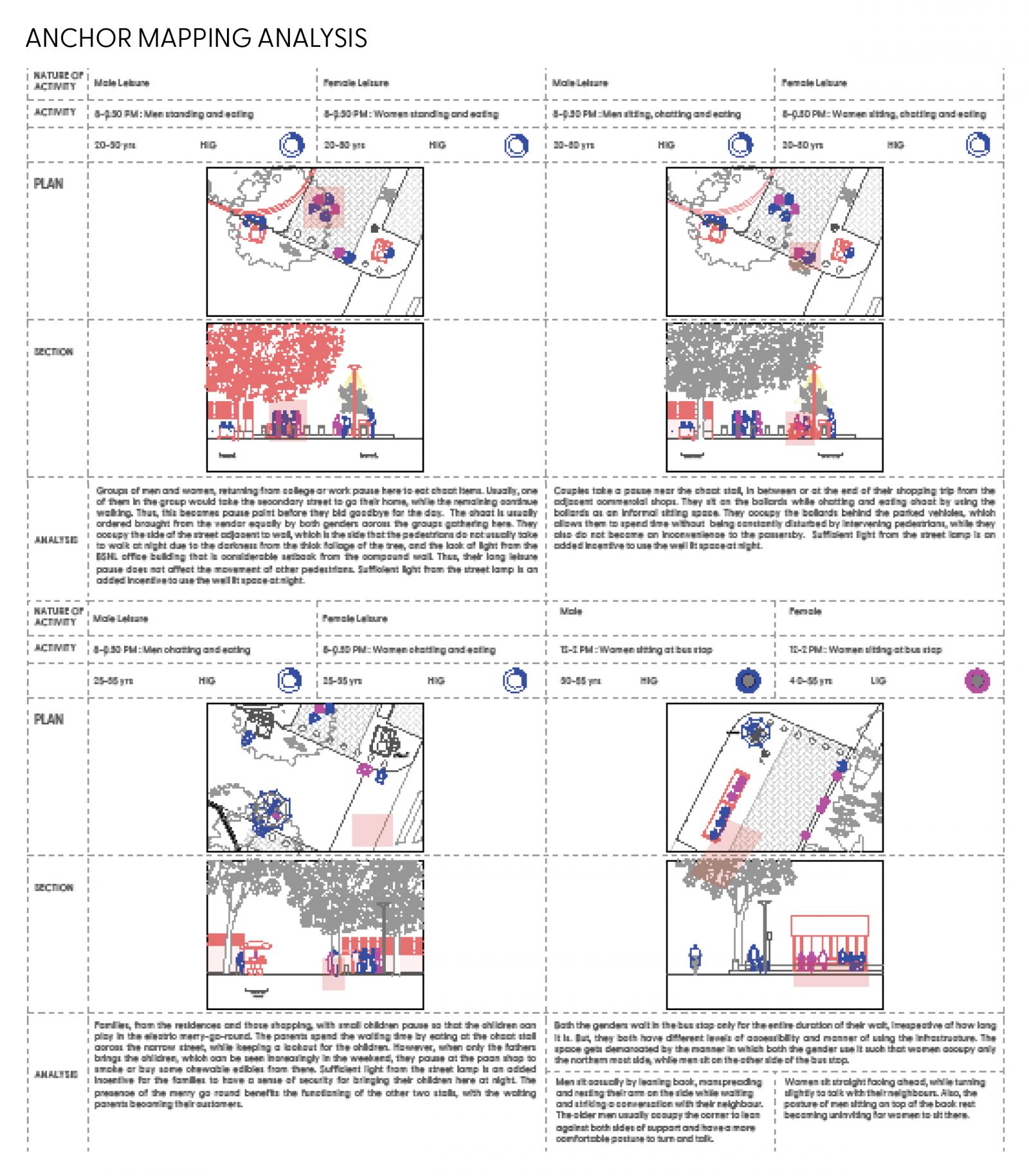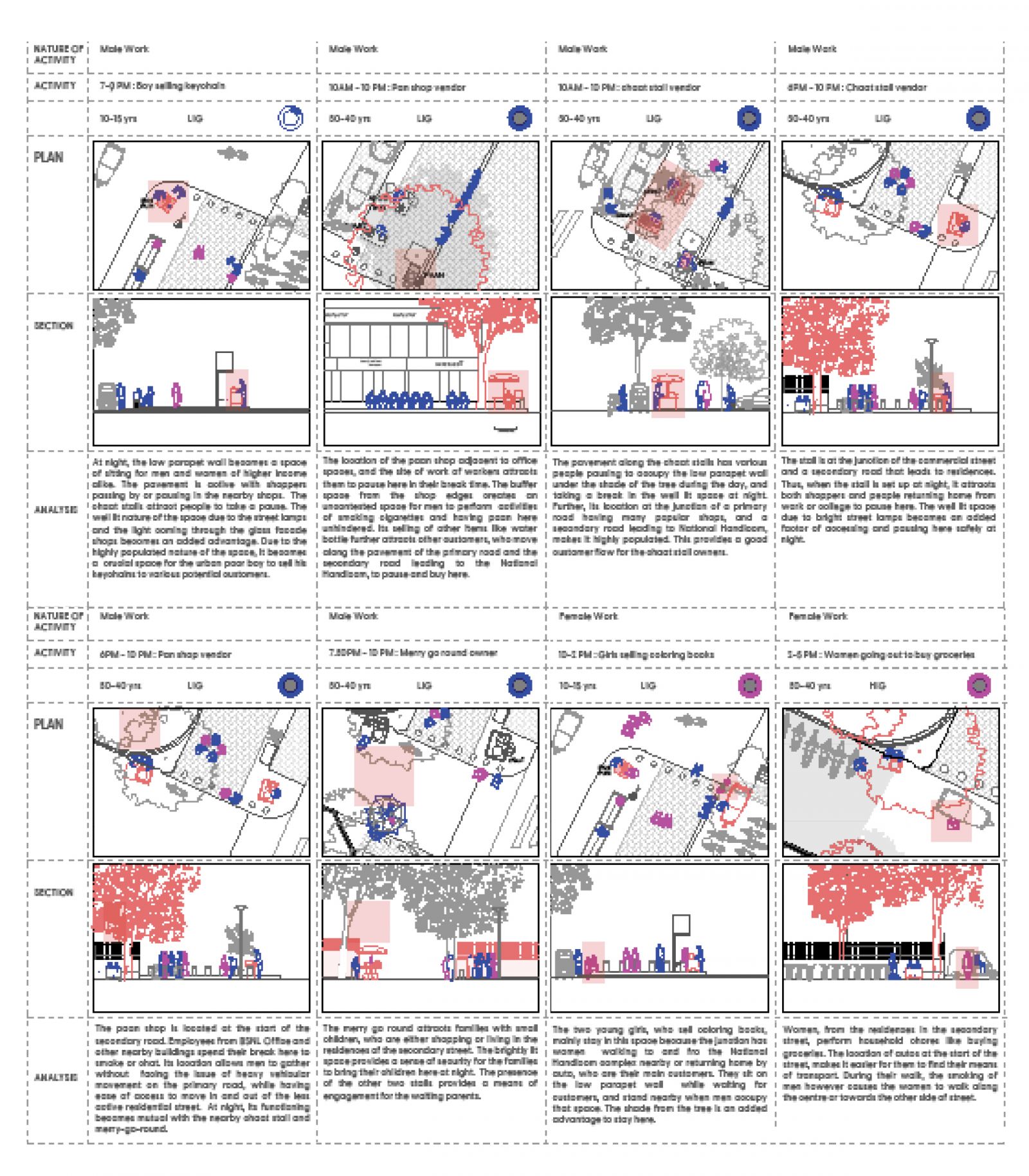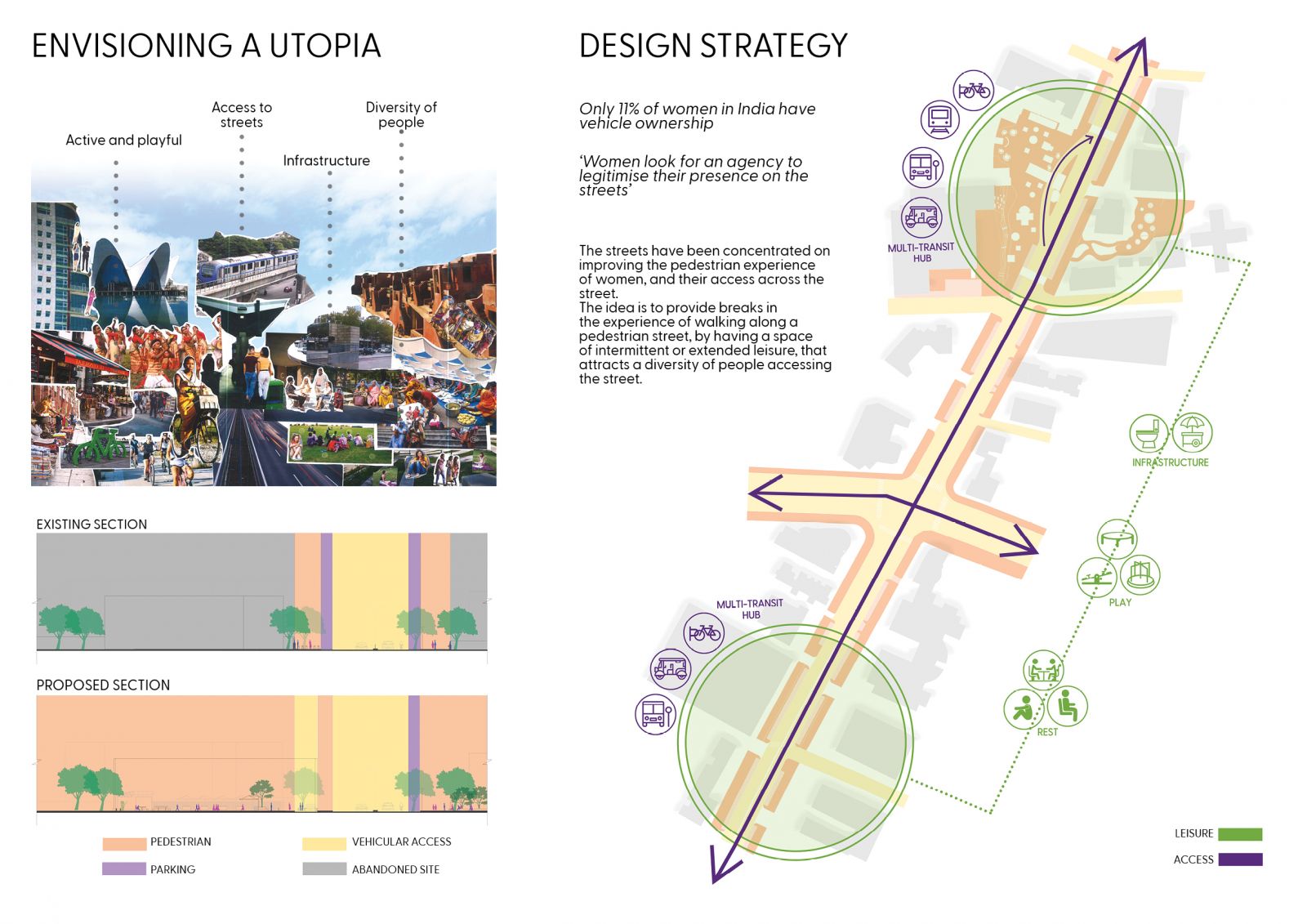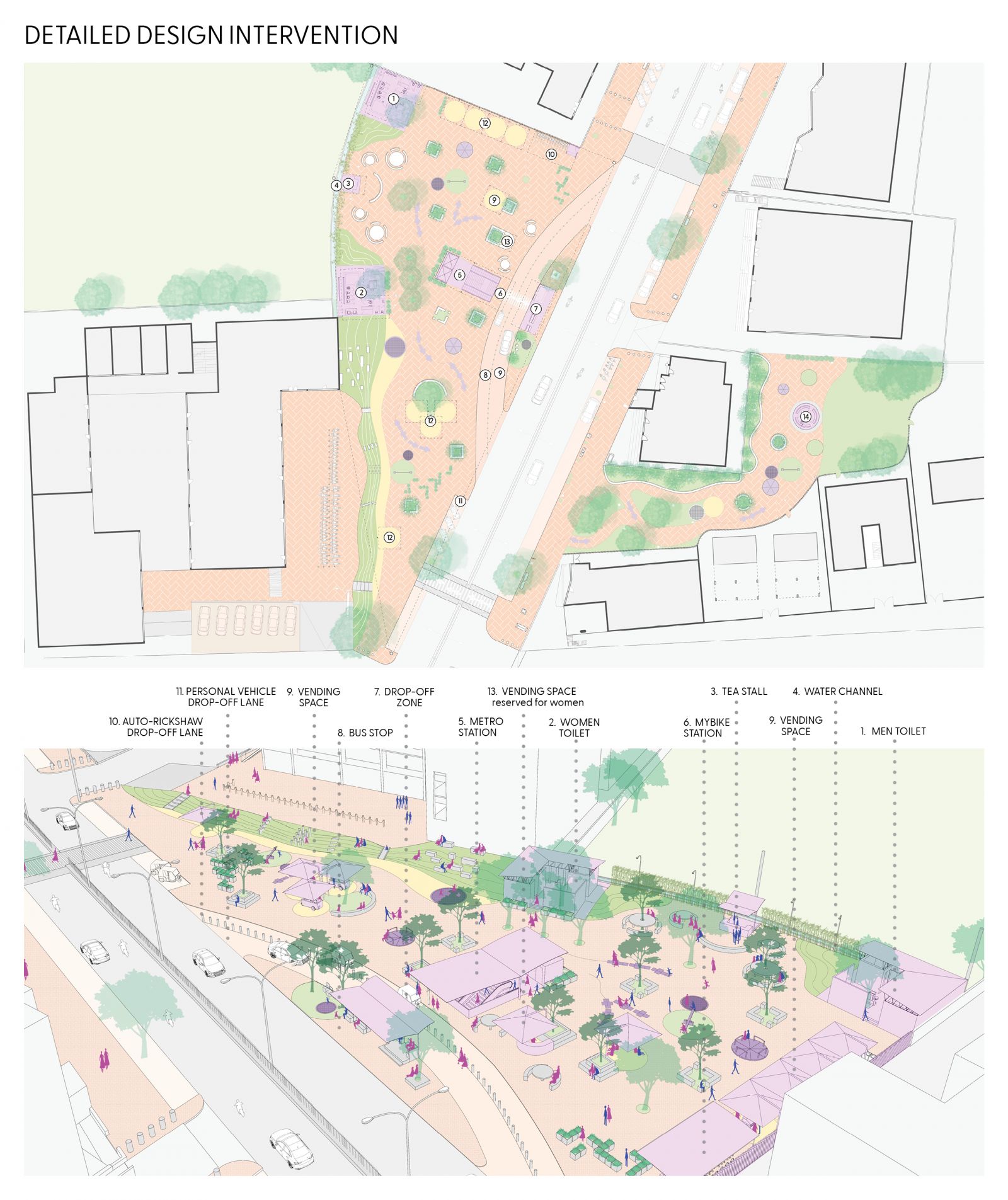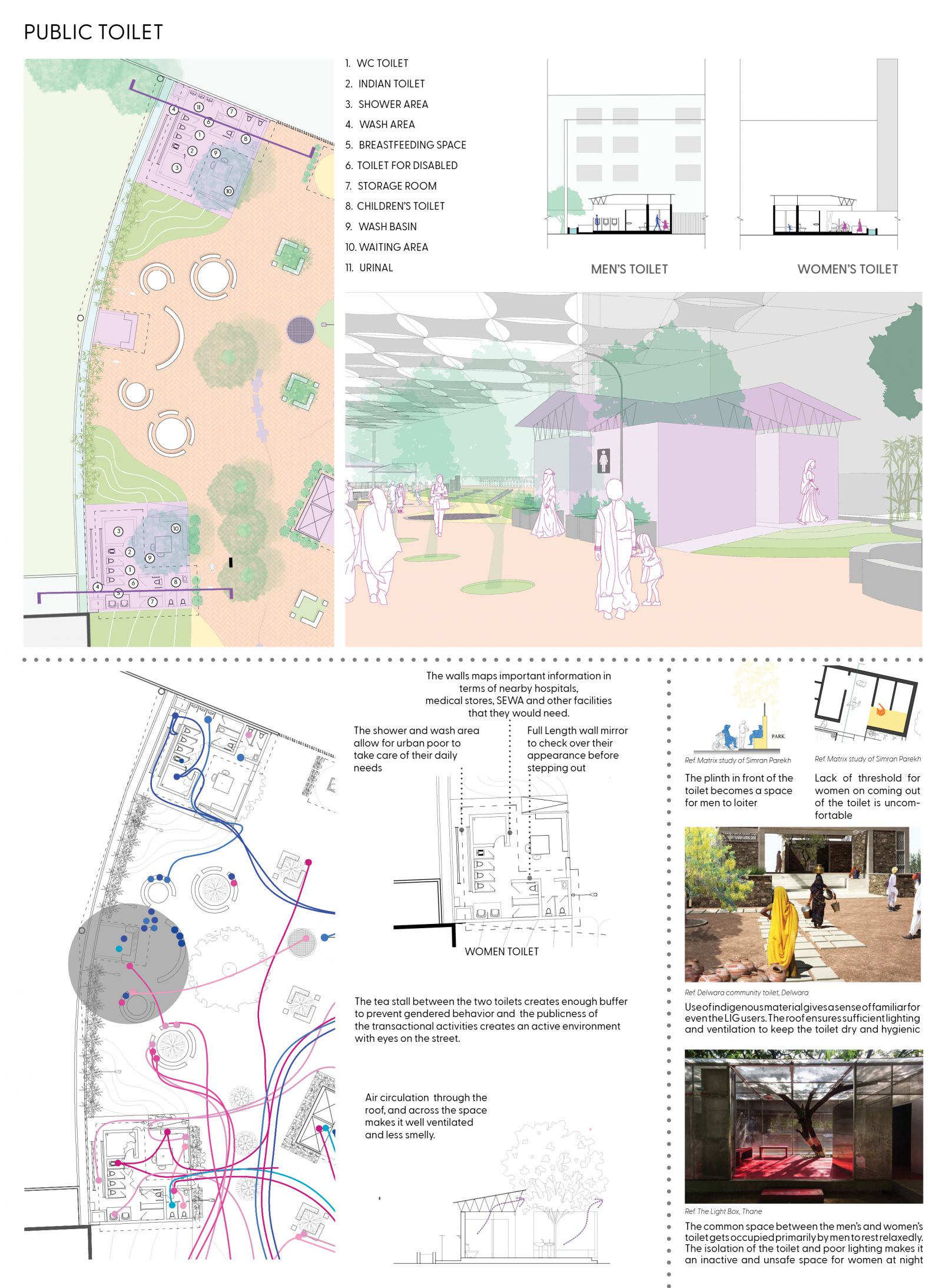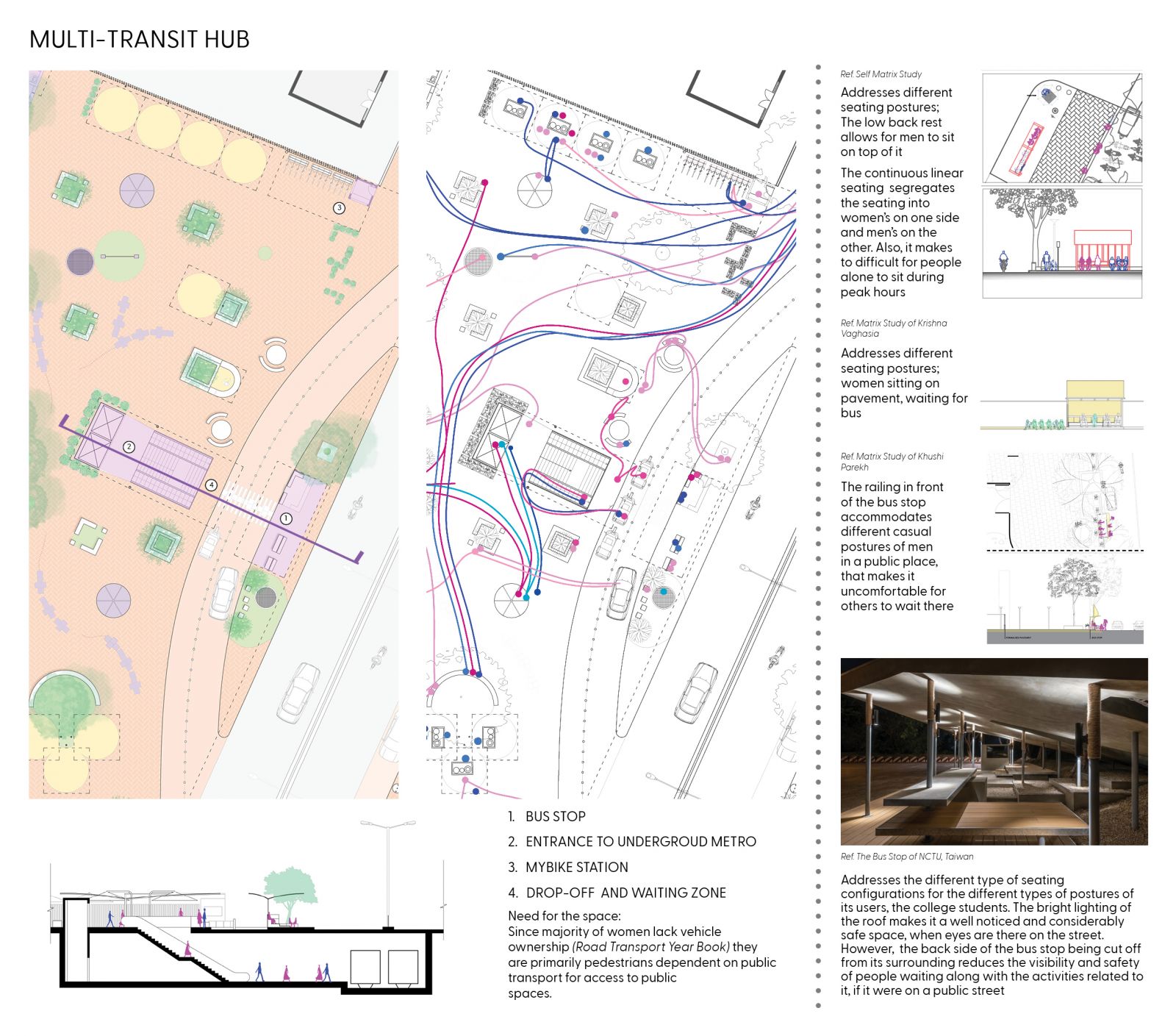Your browser is out-of-date!
For a richer surfing experience on our website, please update your browser. Update my browser now!
For a richer surfing experience on our website, please update your browser. Update my browser now!
Women are primarily pedestrians on the street, with a majority of them not having vehicular ownership. Thus, the streets have been concentrated to improve their access, leisure and safety, as they walk the along the pavement.On a larger level, the idea is to provide breaks in the experience of walking along a pedestrian street, by having a space of intermittent leisure, that attracts a diversity of people accessing the street. Along with this, the transport connectivity and infrastructure are necessary interventions done to improve their access within and to and from the street. This combined with the transactional activities happening on the streets provide the legitimacy that women seek in public places, as Shilpa Phadka stated in her works, and ensures their presence on pause on the street.
View Additional Work